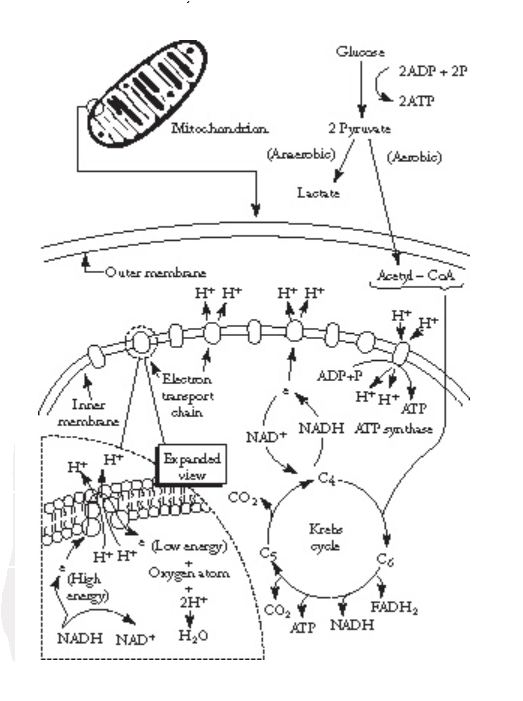Glycolysis
Glycolysis is the process in which one glucose molecule is broken down to form two molecules of pyruvic acid (also called pyruvate).
The glycolysis process is a multi-step metabolic pathway that occurs in the cytoplasm of animal cells, plant cells, and the cells of microorganisms.
At least six enzymes operate in the metabolic pathway.
In the first and third steps of the pathway, ATP energizes the molecules.
Thus, two ATP molecules must be expended in the process.
Further along in the process, the six-carbon glucose molecule converts into intermediary compounds and is then split into two three-carbon compounds.
The latter undergo additional conversions and eventually form pyruvic acid at the conclusion of the process.
During the latter stages of glycolysis, four ATP molecules are synthesized using the energy given off during the chemical reactions.
Thus, four ATP molecules are synthesized and two ATP molecules are used during glycolysis, for a net gain of two ATP molecules.

Figure Above Shows An overview of cellular respiration.
Another reaction during glycolysis yields enough energy to convert NAD to NADH (plus a hydrogen ion).
The reduced coenzyme (NADH) will later be used in the electron transport system, and its energy will be released.
During glycolysis, two NADH molecules are produced.
Because glycolysis does not require oxygen, the process is considered to be anaerobic.
For certain anaerobic organisms, such as some bacteria and fermentation yeasts, glycolysis is the sole source of energy.
Glycolysis is a somewhat inefficient process because much of the cellular energy remains in the two molecules of pyruvic acid that are created.
Interestingly, this process is somewhat similar to a reversal of photosynthesis (see Chapter 5).
Scholarship 2025/26
Current Scholarships 2025/2026 - Fully FundedFull Undergraduate Scholarships 2025 - 2026
Fully Funded Masters Scholarships 2025 - 26
PhD Scholarships for International Students - Fully Funded!
Funding Opportunities for Journalists 2025/2026
Funding for Entrepreneurs 2025/2026
***
